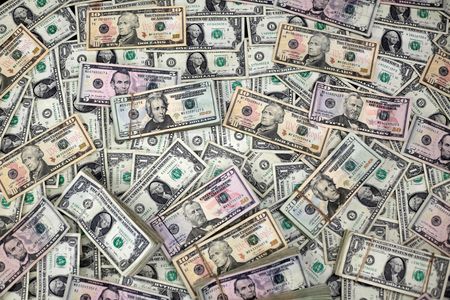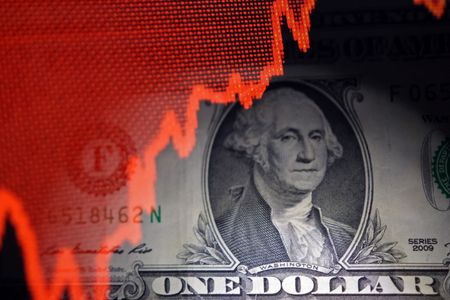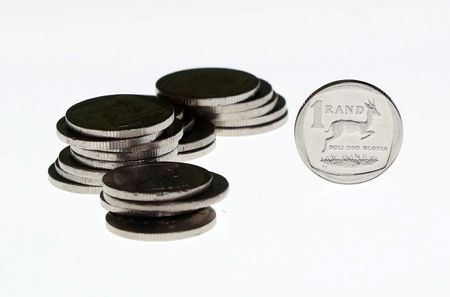By Chuck Mikolajczak
NEW YORK (Reuters) -The dollar surged on Monday as the United States and China reached a deal to temporarily cut reciprocal tariffs and tamped down concerns that a trade war between the world’s two biggest economies could lead to a global recession.
The U.S. will reduce extra tariffs it imposed on Chinese imports in April to 30% from 145% and Chinese duties on U.S. imports will fall to 10% from 125%, effective for 90 days. The de-escalation surpassed investor expectations, with many expecting an introductory round of talks with few, if any, agreements.
“It’s 90 days and so this basically buys some more time, I sort of think the U.S. blinked,” said Marc Chandler, chief market strategist at Bannockburn Global Forex in New York.
“I’m not a big fan of the tariffs in the first place, but once they were in place, the U.S. seemed to back down without getting much in exchange. That is, we stopped with our reciprocal tariffs on China and so they unwind their reciprocal tariffs on us, but we’re still back at square one,” Chandler said.
The dollar index, which measures the greenback against a basket of currencies including the yen and the euro, rose 1.5% to 101.91, with the euro down 1.54% at $1.1074 and on track for its biggest one-day decline since November 6.
The risk-on mood propelled U.S. stocks sharply higher, with the S&P 500 up more than 3%, and weighed on safe-haven currencies, with the dollar up 2.19% against the Japanese yen to 148.50 after reaching 148.64, its highest level since April 3.
Against the Swiss franc, the dollar rose 1.86% to 0.847 after reaching 0.8475, its highest since April 10.
Sterling weakened 1.07% to $1.3162 and was on track for its biggest daily drop since April 7.
While the greenback has strengthened for three straight weeks on growing optimism over potential trade deals, the dollar is still down 2.2% since April 2, when Trump announced sweeping tariffs as his uneven rollout of policies and exemptions shook confidence in U.S. assets.
The focus this week will also be on U.S. Consumer Price Index (CPI) figures on Tuesday and on April retail sales due on Thursday for indications of how the global trade conflict has impacted the economy and expectations for further interest rate cuts by the U.S. Federal Reserve.
Traders on Monday dialed back on rate cut expectations by the Fed and European Central Bank as economic prospects improved after the Sino-U.S. trade deal. Markets now see the first cut of at least 25 basis points (bps) from the Fed as likely to come at the central bank’s September meeting, compared with the July view last week.
Analysts at Wells Fargo said the deal supports the firm’s near-term view for U.S. dollar strength, buttressed by a Fed that would be slow to cut rates.
The Chinese yuan strengthened 0.52% against the greenback to 7.201 per dollar. Meanwhile, geopolitical tensions also appeared to ease over the weekend, further buoying risk sentiment.
India and Pakistan announced a ceasefire following four days of fighting between the nuclear powers which had rattled markets.
Ukrainian President Volodymyr Zelenskiy said he was ready to meet Russian leader Vladimir Putin in Turkey on Thursday for direct talks. That would be the first negotiations between the two countries since the early months of Russia’s 2022 invasion.
(Reporting by Chuck Mikolajczak, Additonal reporting by Medha Singh, Rocky Swift, Jiaxing Li and Danilo Masoni; Editing by Andrea Ricci and Will Dunham)










